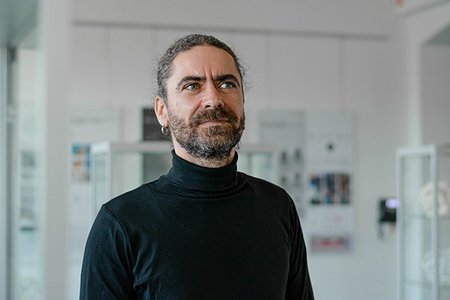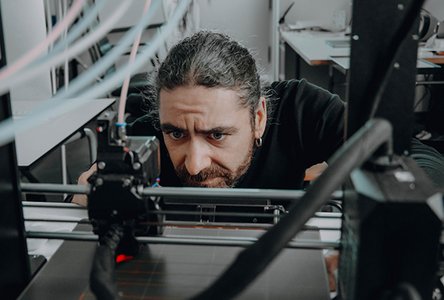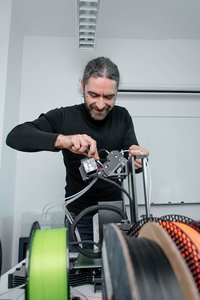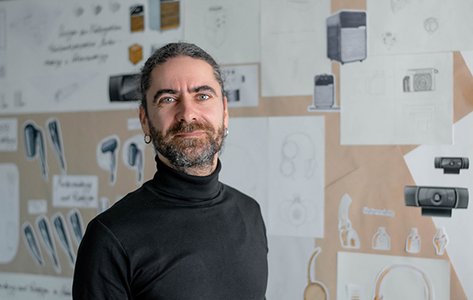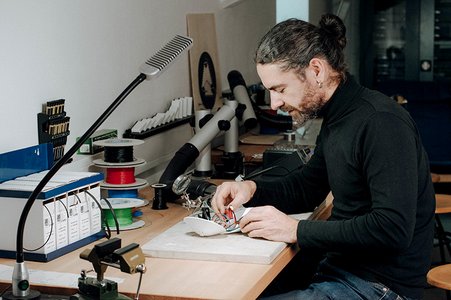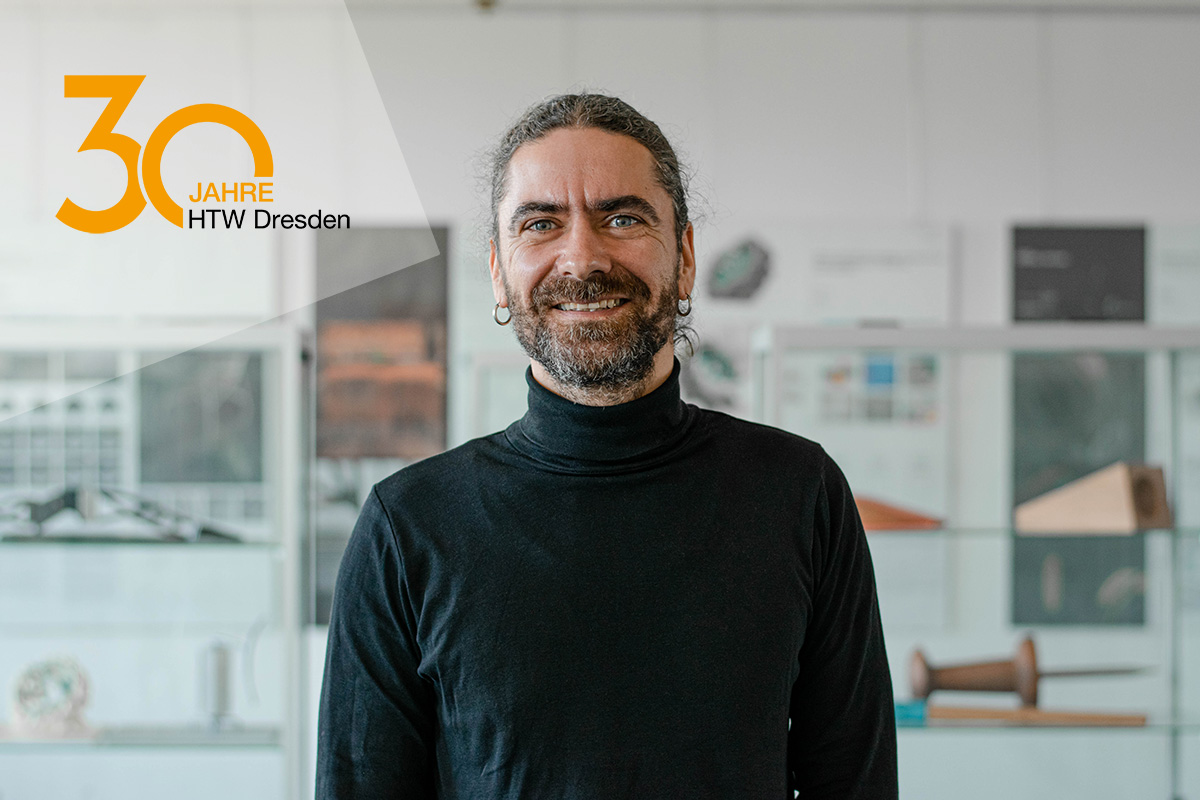
André Kabella: "I was lucky enough to be part of the development of the Faculty of Design from the very beginning."
On the occasion of the 30th anniversary of HTW Dresden, we are presenting people from the university in our portrait series.
We asked André Kabella what special experience he associates with HTW Dresden and what he would like to see in its future development.
André Kabella teaches computer animation, digital video and interaction at the Faculty of Design. His path at our university already began with his design studies in 1994, at that time still in the Design Department. Since 2020, he has also been a member of staff in the faculty and accompanies students in their projects.
What connects you to HTW Dresden?
I got to know the university in 1993. I was incredibly fascinated by the then new degree programme "Product Design" of the newly founded Department of Design. The content of the course and the project-oriented way of working were exactly what I was looking for. The dynamic of a new beginning was palpable. I began my studies here in 1994 and graduated with a diploma (FH) in 1998. The subsequent stay abroad to study for a Master's degree in England made me experience the stark contrast between international design ideas and education strategies and appreciate all the more the opportunities offered at HTW Dresden. I have also been working at our university since 2000.
The Department of Design has become the Faculty of Design; the diploma course in Product Design has developed into the degree courses "Design: Product and Communication" (BA) and "Design: Products and Interactions" (MA). The number of students has increased significantly. The faculty has grown. I was able to experience and help shape this process from almost the beginning.
What experience has had a particular impact on you?
There were several enlightening moments during my studies. With Prof. Gerd Flohr, for example, we discussed the arrangement, width and course of the parting lines of housing parts, and Prof. Rainer Groh lectured on the aesthetics of weld seams. Among other things, my basic aesthetic understanding was developed through such influences. The combination of sensible function, comprehensible form, comprehensible behaviour, technical accuracy and quality craftsmanship down to the smallest detail have since formed the basis of my understanding of design.
Describe HTW Dresden in three words.
"design - study - now"
What do you wish for the future of the university?
Courage and vision should play a major role in future decisions on the further development of HTW Dresden. A university has a social responsibility, must be an innovative pioneer, understand and promote change in a positive sense, dare to experiment.
Which place on campus is your favourite?
Besides the Interaction Studio, which I mainly supervise, there are two other places on campus that mean something special to me. One is the rose garden between the S-building and the library; an idyllic place for a summer lunch break in the shade of the trees. The other place I want to mention is the side staircase in the S-building between the 1st and 2nd floors. Unlike most of the other public transport areas of the university, it is very small and winding; it doesn't quite seem to fit in with the rest of the university architecture. For me, this makes it a surprising gem.
More portraits will be published on our anniversary page in the coming weeks: www.htw-dresden.de/30jahre


